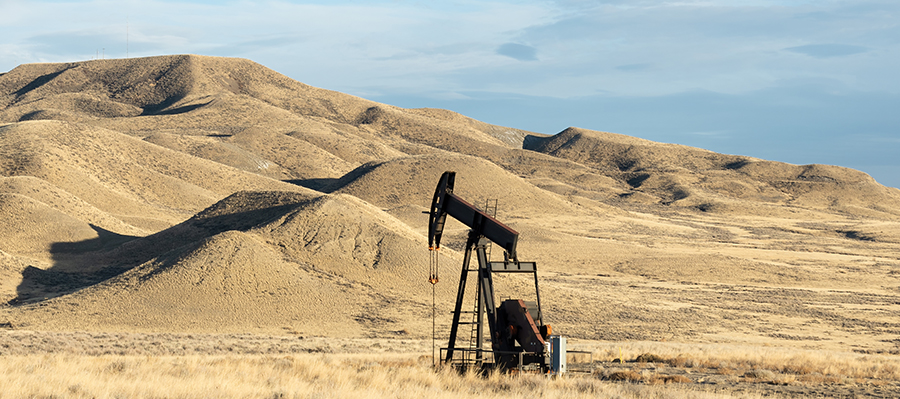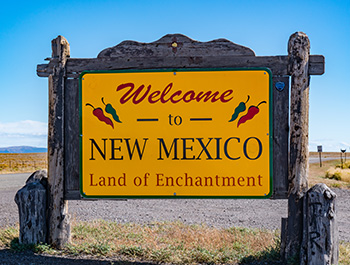- April 02, 2025
- Kerry Curry
New Mexico Fuels U.S. Crude Oil Output, Quietly Becoming Energy Powerhouse

A recent Federal Reserve Bank of Dallas (Dallas Fed) energy report highlights southeastern New Mexico as a powerhouse in energy production, a phenomenon that has Federal Home Loan Bank of Dallas (FHLB Dallas) financial institutions and the communities they serve ripe with opportunities and challenges tied to that distinction.
“We are seeing a lot of small business lending opportunities, including oil-and-gas service companies and retailers,” said Joshua Grassham, executive vice president with Lea County State Bank in Hobbs, New Mexico.
In 2023, Lea County grabbed the distinction as the first U.S. county to pump more than 1 million barrels of oil per day, according to the oil and gas research firm Enverus. Neighboring Eddy County, where Carlsbad, New Mexico, is located could reach that milestone later this year, according to Nova Labs, an energy analytics firm.
The oil industry helped fill the state’s coffers with $13 billion in state and local revenue in fiscal 2024, according to the New Mexico Oil & Gas Association, accounting for 49 percent of the state’s general fund revenue.

“The energy boom in the Permian Basin has been a blessing for all of New Mexico,” said Western Commerce Bank President and CEO Jason Wyatt. “It is driving small business expansion, housing development, construction of new schools and desperately needed infrastructure improvements.”
Homegrown community banks like Western Commerce Bank in Carlsbad are available to help with the growing pains, he said.
“Community banks like ours understand what is going on; we understand the region and are here to help with the growth and expansion,” Mr. Wyatt said. “Before the advent of drilling in the Permian Basin, we relied on agriculture, the Waste Isolation Pilot Plant (an underground depository for nuclear waste) and the potash mines. Our schools hadn’t been updated in about 50 years, but the rapid growth also brings its own set of struggles, like not having enough grocery stores or restaurants.”
Jay Jenkins, a Carlsbad banker who serves as president and CEO of CNB Bank, said national retailers still view the Permian Basin oil boom as a Texas phenomenon — a challenge to attracting national chains. He hopes recent reports like the one from the Dallas Fed change that perception. Carlsbad, officially, has 32,238 residents, according to the 2020 Census, but Mr. Jenkins believes that was a severe undercount and estimates its population at about 70,000.
Man camps have sprung up in the area to handle the influx of the region’s highly paid oilfield workers, and major oil firms including Exxon, Conoco Philips and Occidental Petroleum have established office buildings in Carlsbad with workforces that include well-paid petroleum engineers and oil executives.
Over in Hobbs, the city of 54,460 people lacks sufficient affordable housing to deal with the influx of oilfield workers, oil companies and the ancillary businesses that are bringing more people into the city, Mr. Grassham said, while restaurants and stores are having trouble finding workers and are experiencing wage pressures.
“If a nice home goes on the market, bidding wars may ensue and if a new house is being built, it is sold within hours of breaking ground,” he said.
The bank, he said, has tapped our Homebuyer Equity Leverage Partnership (HELP) program. We increased down payment and closing cost grants for New Mexico and Texas residents through HELP to $25,000 in 2025 from $20,000 last year to address rising home prices in those two states, which are part of our five-state District, which also includes Arkansas, Louisiana and Mississippi.
Permian Basin Powerhouse
Although people have long associated the Permian Basin with West Texas towns such as Midland and Odessa, this rural hardscrabble land of tumbleweeds in southeastern New Mexico is rapidly gaining notice.
“Given that New Mexico has some of the top-performing wells in the Permian Basin, the overall outlook is promising,” according to the Dallas Fed energy report, authored by Garrett Golding, Diego Morales-Burnett and Kunal Patel.
Oil production in New Mexico has risen from 0.9 million barrels per day in 2019 to 2 million barrels per day in 2024, the report said.
Dallas Fed economist Mariam Yousuf recently gave a presentation on Texas economic indicators to our employees here at FHLB Dallas and she also gave a shout-out to New Mexico’s oil production.
“We tend to focus a lot on Texas because it is the largest economy in our district, but interesting news is coming out of New Mexico on oil production,” Ms. Yousuf said. Both states straddle the oil-rich Permian Basin.
“Since 2017, but particularly since 2020, crude oil production in New Mexico has grown significantly,” she said.
Smaller producers could see price pressures this year, however, with growth coming from larger producers if prices settle into the high $60s over the next six months, Ms. Yousuf said.
“Production of oil really depends on the price of oil and the price of oil is incredibly hard to predict because it depends on so many things.”
Ms. Yousuf’s comments represent her own opinions and not the opinions of the Dallas Fed.
A Bright Future
The FHLB Dallas members we’ve talked to have generally positive outlooks for the oil patch, despite some uncertainty over tariffs and their potential effect on the nation’s economy.
“At our bank, we will continue focusing on taking care of people,” said Mr. Jenkins with CNB Bank in Carlsbad, where the financial institution could hit $1 billion in assets by next year. “Everyone has financial needs and it’s an exciting time to be in banking. I’m optimistic.”
Mr. Wyatt, at Western Commerce Bank, points to the new hotels, schools and infrastructure coming online and the opportunities for small business lending.
“We have a lot going on in our city and that is exciting,” he said. ‘We have increased our employee count in the last four to five years from 75 to about 100 employees.”
In nearby Hobbs, Mr. Grassham at Lea County State Bank is focused on the long-term.
“The rig counts have been steady and that’s what we like to see,” Mr. Grassham said. “There’s a ‘Drill Baby, Drill’ mentality for some people but, in reality, we want stability.”
Kerry Curry is a Senior Communications Writer at FHLB Dallas.




